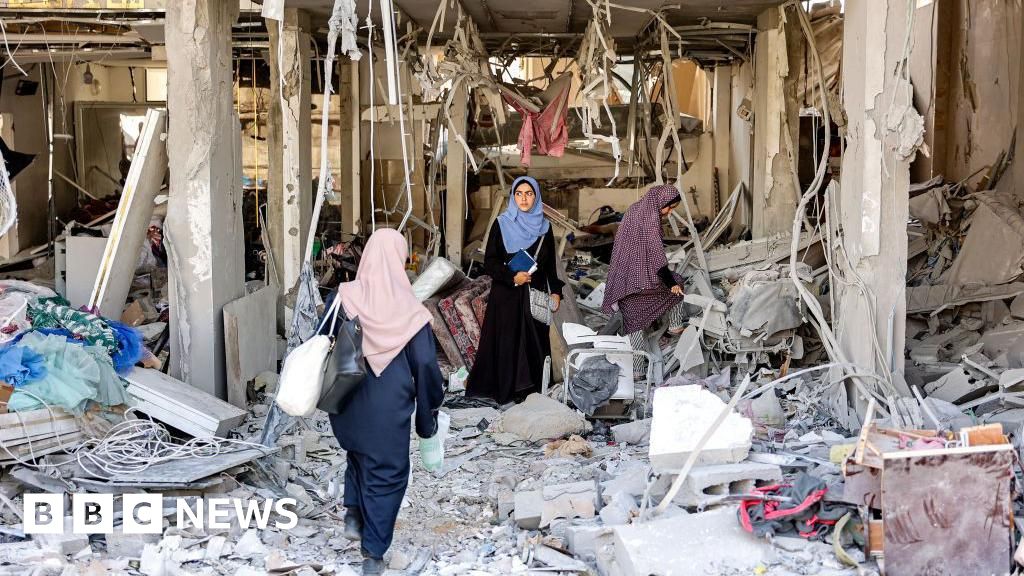When is a ceasefire not a ceasefire? According to the Israeli army, this is a “local, tactical suspension of military activities for humanitarian purposes”.
Israel’s humanitarian aid coordinator in Gaza detailed the planned daily pause in fighting between 08:00 and 19:00 local time, along a key route stretching north from the Kerem Shalom crossing, where waiting delivery of aid supplies.
The announcement almost immediately triggered a fierce political attack from far-right government ministers – and a swift defense from the Israeli army, which insisted it did not mean an end to the fighting in southern Gaza or any changes in the flow of humanitarian aid. .
That the announcement proved so explosive underscores the increasingly fraught situation for the Israeli prime minister, who is caught between the vague and so far unattainable military goal of dismantling Hamas and bringing back hostages and the political allies on whom he relies. between costs.
Agencies will still need to coordinate operations with Israeli forces, and WFP Gaza director Matt Hollingworth said the test will be whether coordination becomes smoother and faster as a result.
But he also said coordination is only part of the hurdle agencies face in delivering aid inside Gaza.
Sunday’s announcement “does not address the issues of insecurity and crime,” he said. “This is the most dangerous part of the Gaza Strip right now to deliver aid.”
Aid agencies reported over the weekend that the ongoing war has worsened severe malnutrition in parts of Gaza.
Israel is facing pressure from NGOs, allies and Israel’s High Court to provide more aid to Gaza.
But Prime Minister Benjamin Netanyahu faces fierce opposition from two far-right cabinet colleagues who say they will overthrow his government if he agrees to end the war and argue that the delivery of aid will delay Israel’s victory.
They reacted angrily to today’s announcement, with Internal Security Minister Itamar Ben-Gvir describing “those who made this decision” as “evil” and “fools”.
Finance Minister Bezalel Smotrich said humanitarian aid helped Hamas stay in power but could also “undo the gains of the war.”
He said that the army’s message on the day Israel buried 11 soldiers was a sign that the leadership paid too much attention to international public opinion and not enough to local troops.
Both men have threatened to overthrow Netanyahu’s coalition government if he follows U.S. wishes to end the war.
But domestic pressure over the cost of the war is also growing. Israel’s parallel conflict with Lebanon’s Hezbollah has escalated in recent days, underscoring the broader risks of continuing a war with its Hamas ally.
Large crowds protested in Tel Aviv last night, calling on Netanyahu to end the conflict in Gaza and sign a deal to return 120 Israeli hostages home.
The funerals of the 11 soldiers killed in Gaza over the weekend have once again put the spotlight on how to achieve the war goals stated by Israel’s prime minister.
Mr Netanyahu promised “total victory” against Hamas. He described the current operation in Rafah as an attack on the group’s last remaining battalion in Gaza – which he said was necessary to destroy the group.
But it is clear that even disbanding Hamas as a structured military organization would not mean a complete end to the conflict. Israeli forces still face guerrilla operations by Hamas militants in areas they have previously cleared.
There is no indication that the group’s main leaders, Yahya Sinwar and Mohammed Deif, have been killed or captured.
For Netanyahu, ending the war could bring about a new battle for his own political survival.
The divisions exposed today between his troops and allies underscore the tension between rhetoric and reality in this war.
Mr Netanyahu faces tensions as he straddles them: caught between the promise of “total victory” and the prospect of “forever war”.

